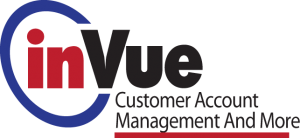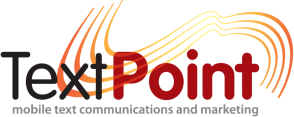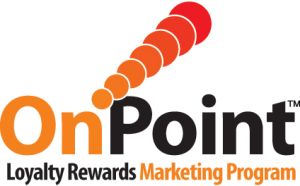Talk to Your Customers Now About Saving Money
Posted: 02/01/17
By Richard Rutigliano, PriMedia, Inc.
OIL PRICES HAVE BEEN UNCOMFORTABLY high all winter, while natural gas prices have fallen to the lowest point in 10 years. It's wise to assume that your customers are thinking seriously about solving the problem of their high heating costs before next winter rolls around, with or without you.
They probably appreciate all that you do for them, but now they want help beyond merely cleaning their burner or putting them on a budget plan. They want to heat their homes for less next winter, and they want you - or someone else - to show them the way.
The media is full of messages that work against you. There are headlines almost every day about low natural gas prices, the high cost of heating oil, and the United States' addiction to oil. Your customers are seeing them all - and nothing about why they should stick with you.
SPEAK UP!
You can't prevent them from hearing gas utility advertising or talking to friends who boast about how much less they are paying for heat, but you can get your point of view into the conversation.
The truth is that there are lots of good reasons for a customer to continue working with you. Your challenge is to convince them of that by demonstrating all the value that you deliver and raising legitimate doubts about the alternative fuel sources in your market.
One obstacle that stops many oil dealers from mounting an effective customer outreach campaign is cost. With oil prices up and revenues down, company budgets are severely squeezed, and it's hard to set aside funds for any non-essential items. The fiscal pressure is very real, but so is the risk of failing to represent your point of view to your base. When you leave it to the media and utilities to define the differences between Oilheat and natural gas or discount oil, you create risk for your company.
Rather than assume that you can't afford a decent outreach campaign in 2012, try setting some goals and determining how much it will cost you to achieve them. For just a few dollars per customer, you might be able to deliver an impactful message that will alter customers' thinking - and stem your losses.
The best tool for influencing your customers in 2012 is a special edition company newsletter. Unlike a traditional newsletter that might include a mix of company news and efficiency advice, the special edition should focus tightly on solutions for reducing the cost of home comfort, especially heating. The newsletter's special emphasis should come across loudly and clearly, so customers see that you recognize their needs and are moving proactively to help them.
MAKE THE NEWSLETTER YOUR OWN
A powerful emphasis on efficiency solutions will work for any home comfort company, but the details of your newsletter should be specific to your company - featuring your best solutions and supporting your specific goals.
The process of developing great newsletter content begins in-house. Start by identifying your short-term goals. If there are ample opportunities for system upgrades within your customer base, develop a plan of attack. Determine which systems that you sell are most likely to appeal to your customers and craft special offers that will get customers' attention.
Plan to offer solutions that encompass a variety of price points. On the low end, you can offer accessories like programmable thermostats and microprocessor-based burner controls. For the high end, promote your best high-efficiency systems. Create special offers, bundles and financing around these options and give them catchy names to help customers remember them.
That menu of solutions should serve as the focal point for the newsletter and all your 2012 outreach efforts. Instead of simply communicating a generalized pro-company message, you'll be issuing a call to action. You'll zero in on the topic of controlling costs through better equipment - and inspire customers to take positive action with your expert help.
Before you commission the newsletter project, consider how you'll deal with issues like home sealing, insulation and home energy audits. Any customer who is thinking about reducing energy use is probably well aware that sealing the building shell is a great way to cut costs, and they might know that an energy audit is a great starting point.
If you offer energy audits and building shell services, you'll feature those in the newsletter. If you don't offer them, however, you'll need to make a choice. You might want to partner with a company that offers some of those services and is willing to work with you on acceptable terms. That way, you'll be able to tell customers that you can help them tighten their homes and/or get an energy audit - and position yourself as a one-stop shop for all their energy conservation needs.
If your 2012 goals include increasing your enrollments in budget plans, service contracts and other programs, you can promote those in the newsletter without compromising the focus on controlling costs. Plan to devote one of the back pages of the issue to cost management, and describe your programs in that context. Promote each service as a tool for gaining control over expenses. A budget plan article fits nicely, because you can talk about making bills more manageable. You can also describe price protection as a means for controlling price risk and highlight referral programs and prompt-payment discounts as ways to cut the total annual spend.
DOUSE THE COMPETITION
While you have their attention, throw some cold water on your competition. If conversion to natural gas is an issue in your market, include an article or two that challenges what the utilities are saying. If it's discount oil dealers that you're worried about, discuss the advantages of full service and help customers see the risks they assume when they use a discounter.
You'll also want to publicize any new services or products that you offer. If your new offerings can save your customers money, discuss them in that context to maintain the savings theme throughout.
You might wonder how you can possibly squeeze all these articles into one newsletter. One logical solution is to send a larger newsletter than you have published in the past. If you usually write only four pages, think about going to six for your spring special edition. Your print and mailing costs will rise only incrementally, and the expanded size will increase the impact by grabbing customers' attention and drawing them in.
Newsletters have been a cost-cutting casualty at many Oilheat and propane companies, which is unfortunate because they can be so effective when executed well. One of their best attributes is that you can deliver them to every customer and get your best marketing messages in every home at an efficient price.
Let's face it, your message is always competing for attention with a host of other communications vehicles, but it's reasonable to expect that your focus on energy-saving solutions will get their attention this year. When they see at a glance that the newsletter is all about opportunities for them to save, there is an excellent chance that they'll sit down and start reading right away.
Not only will they see you in a new light, they'll also be tempted to buy if your offers are compelling and well pitched. Plan to maintain a steady drumbeat about the value of energy efficiency throughout the newsletter. Connect the abstract concept of high efficiency to real-life concerns like monthly heating bills, sensible management of household expenses and reduced household emissions. Help them understand that older equipment is wasting their money, so they can develop a sense of urgency about eliminating costly inefficiencies.
GENERATE SALES LEADS
No customer newsletter is complete without an interactive component. You will be planting lots of good ideas, so you need to make it easy for customers to signal their interest to you. Plan to include a reply card with an "I am interested in..." checklist that includes every type of equipment or service you promote in the newsletter. You'll generate more sales leads.
Companies that offer electronic-only communications for customers who prefer to go paperless are not locked out of newsletter communications. You can develop one newsletter that is suitable for both print and electronic delivery, but be aware that an electronic copy is easier to ignore than a printed one that arrives by mail. Respect the wishes of your paperless customers and send them only the electronic version, but be sure that the e-mail message header indicates that this is a very important message from you.
While a special-edition newsletter packs a punch that is hard to replicate at the price, there are other ways to connect with impact in 2012. You can develop the same strong messaging and publish it in article form on your website, then send customers postcards or letters urging them to visit the site. You probably won't get as many readers, but you'll also spend less on printing and mailing.
If you're sending a letter, keep it short and tightly focused on the same concept of energy-saving solutions. Tell customers that you have great ideas for helping them save energy and ask them to visit your site. You might even include a special offer or coupon that they can claim only by visiting the site.
THE MORE THE BETTER
One great special-edition newsletter can accomplish a lot, but it's even better to communicate with regularity. Consider contacting every customer at least twice this offseason while sticking to the theme of energy-saving solutions. You could send multiple newsletters, or you could follow the newsletter a month later with a powerful customer letter or a series of postcards.
Another thing to remember about newsletters is that they make great promotional pieces for your prospects and lost customers. While you're going to the expense of publishing a newsletter that makes your company look great, maximize your return on investment by publishing extra copies and keeping them on hand to use for mailings, home shows and other promotional opportunities.
Whatever means you choose to communicate, make sure you do some kind of meaningful outreach this offseason. You have invested too much blood, sweat and tears building your customer base to let them simply walk away without taking your best shot at keeping them.
Richard Rutigliano is President of PriMedia, Inc., a full service marketing and communications firm with offices in New York City, Long Island and Boston. The company is now offering free marketing consultations to Oilheat retailers. Phone: 800-796-3342, or visit their Web sites at www.primediany.com and www.oilheat-advertising.com.












